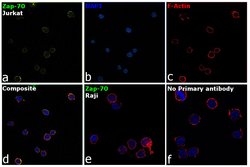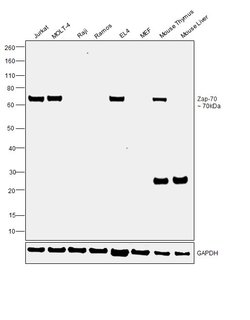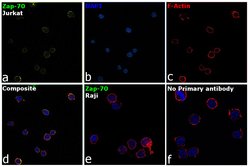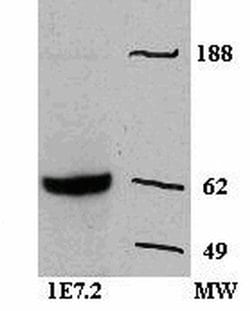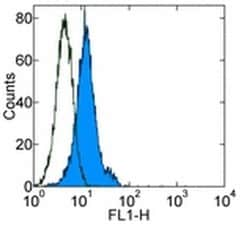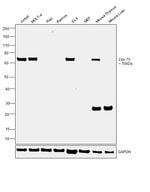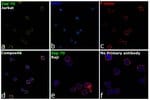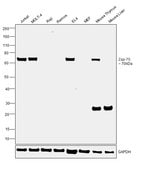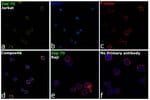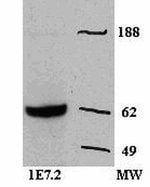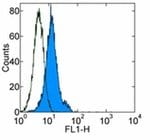Learn More
Zap-70 Monoclonal Antibody (1E7.2), eBioscience™, Invitrogen™
Mouse Monoclonal Antibody
Especificaciones
| Antígeno | Zap-70 |
|---|---|
| Clon | 1E7.2 |
| Concentración | 0.5 mg/mL |
| Clasificación | Monoclonal |
| Conjugado | Unconjugated |
Descripción
The 1E7.2 antibody reacts with human and mouse ZAP-70, the TCRζ-associated protein-70. ZAP-70 is a cytosolic protein tyrosine kinase (PTK) and a member of the Syk family of proteins. It is expressed in T and NK cells and is required for TCR signaling and development. ZAP-70 interacts with the TCR complex by binding to tyrosine-phosphorylated immunoreceptor tyrosine-based activation motifs (ITAMs) present in the invariant subunits of the TCR complex. Following activation, ZAP-70 is phosphorylated on several tyrosine residues by two mechanisms; an autophosphorylation and a transphosphorylation by the Src family tyrosine kinase Lck1-3. Tyrosine phosphorylation of ZAP-70 correlates to its increased kinase activity and triggers downstream signaling events. Mutations in ZAP-70 have been shown to result in a form of Severe Combined Immunodeficiency Syndrome (SCID) in humans. 1E7.2 was generated against a KLH-peptide sequence corresponding to the human ZAP-70 amino acid residues 282-307. While ZAP-70 is normally expressed in T and NK cells, several recent studies have also shown high correlation of ZAP-70 positive expression with mutated IgVH expression in B-chronic lymphocytic leukemia (CCL). In conclusion, the expression of ZAP-70, which can be measured by intracellular flow cytometry, may serve as a prognostic marker for B-CLL.
ZAP-70 is a cytosolic protein tyrosine kinase that is a member of the Syk family of proteins. ZAP-70 is expressed exclusively in T-cells and natural killer cells and is required for T-cell receptor activation. Upon T cell antigen receptor (TCR) engagement, ZAP70 is phosphorylated on tyrosines 292, 315 and 319 in the interdomain B, located between the SH2 and kinase domains. Phosphorylation of both tyrosines 315 (a Vav binding site) and 319 (a Lck binding site) enhances ZAP70 function in mediating lymphocyte signaling, while tyrosine 292 terminates the transient activation of ZAP70 and attentuates lymphocyte signaling.Especificaciones
| Zap-70 | |
| 0.5 mg/mL | |
| Unconjugated | |
| Mouse | |
| Human, Mouse | |
| P43403, P43404 | |
| IgG1 κ | |
| Affinity chromatography | |
| Antibody |
| 1E7.2 | |
| Monoclonal | |
| Liquid | |
| RUO | |
| PBS with 0.09% sodium azide; pH 7.2 | |
| 22637, 7535 | |
| Primary | |
| 4° C | |
| ZAP70 |
Proporcione sus comentarios sobre el contenido del producto rellenando el siguiente formulario.




